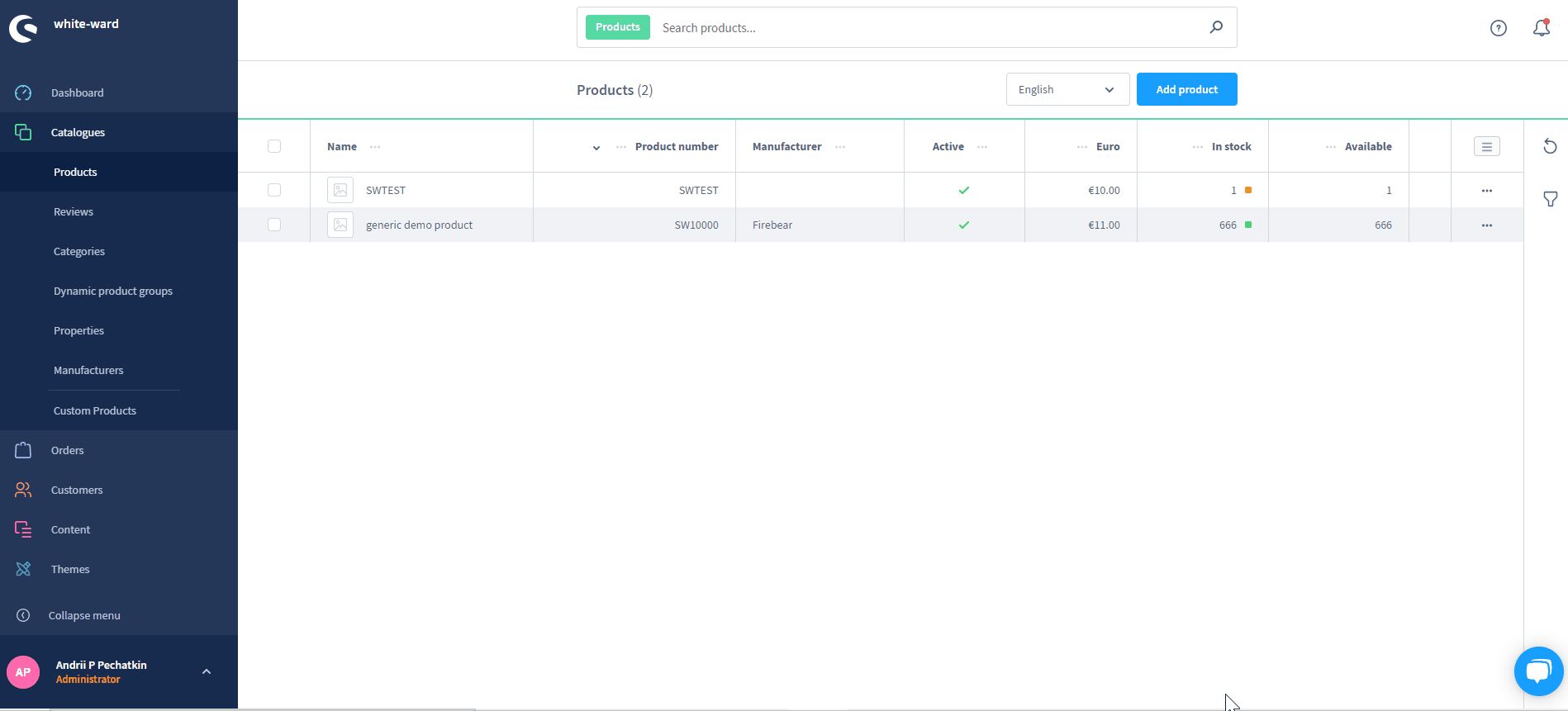How To Translate Shopware 6 Store Into Different Languages
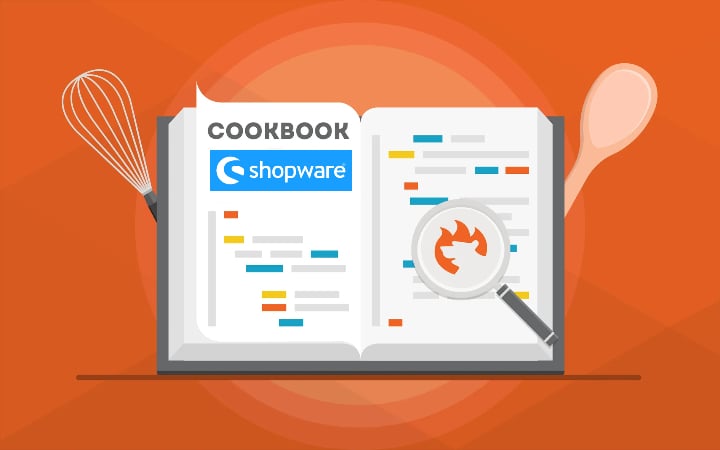
Shopware 6 provides the ability to translate all texts available at your storefront for multiple foreign markets. In the following tutorial, you will learn how to do that. We describe how to manage snippets as well as individual texts. So, let’s see how to translate a Shopware 6 website into different languages. Also, check this guide: How To Set Up A Shopware Store In A Foreign Language. You can find more useful materials here.

Note that we provide Shopware integration with external platforms. Contact our support for further information or try our Improved Import, Export & Mass Actions.
Table of contents
- 1 Snippets
- 2 Individual texts
- 3 Shopware 6 Essentials FAQ
- 3.1 How to create a Shopware account?
- 3.2 What about a Shopware ID?
- 3.3 What is Shopware master data?
- 3.4 How to add a new Shopware shop?
- 3.5 How to add a payment method to your Shopware account?
- 3.6 How to create a deposit in Shopware?
- 3.7 How to purchase Shopware extensions?
- 3.8 How to get support in Shopware?
- 3.9 How to automate import and export processes in Shopware 6?
- 3.10 How to migrate to Shopware 6?
- 3.11 How to integrate Shopware 6 with external systems?
Snippets
Snippets represent most static texts, such as button labeling, in Shopware 6. You can freely maintain them in different languages. Thus, all system texts like “Add to cart” are available in your Shopware 6 administration under Main Menu -> Settings -> Shop -> Snippets.
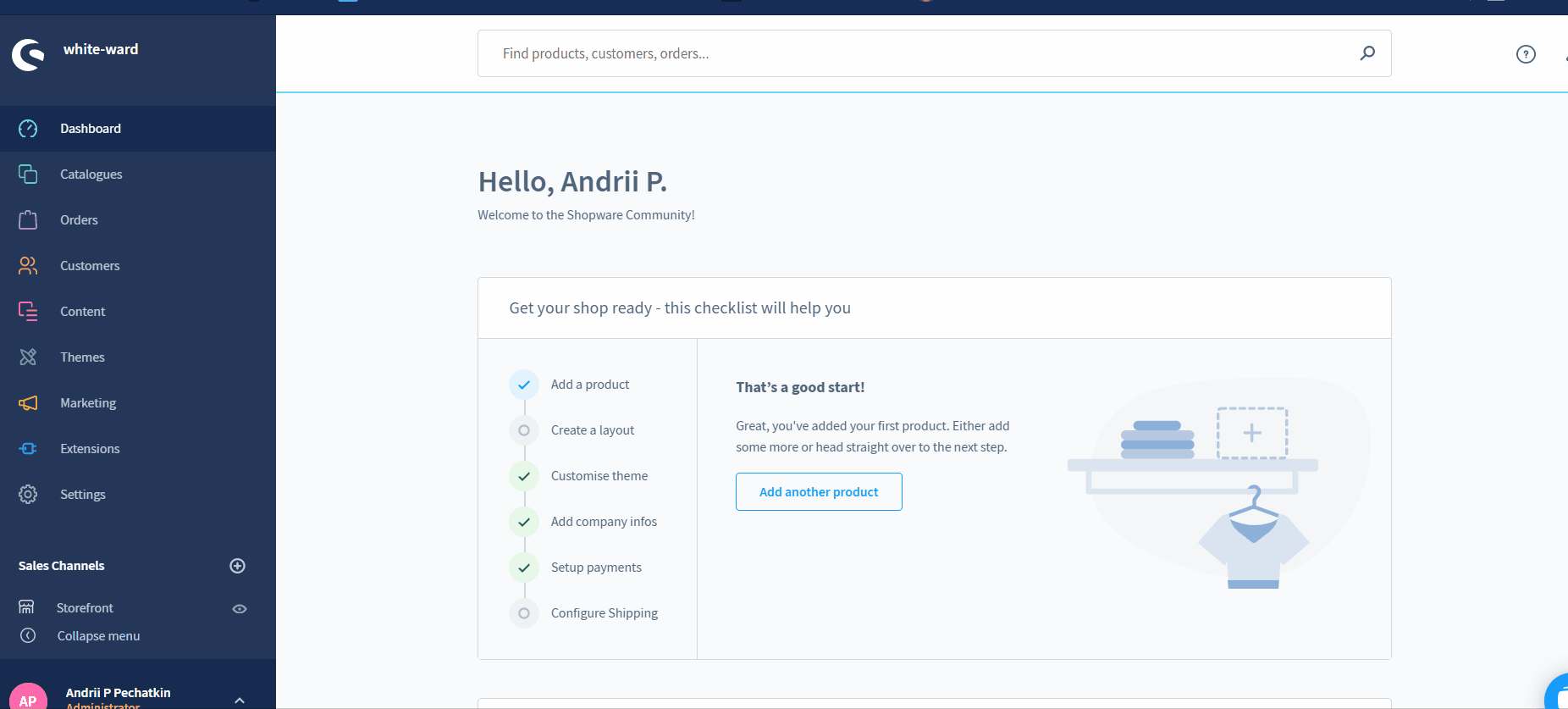
As you can see, each snippet set is associated with a particular language. By default, the system provides the sets for English and German. It means that all the system texts are available in these two languages.
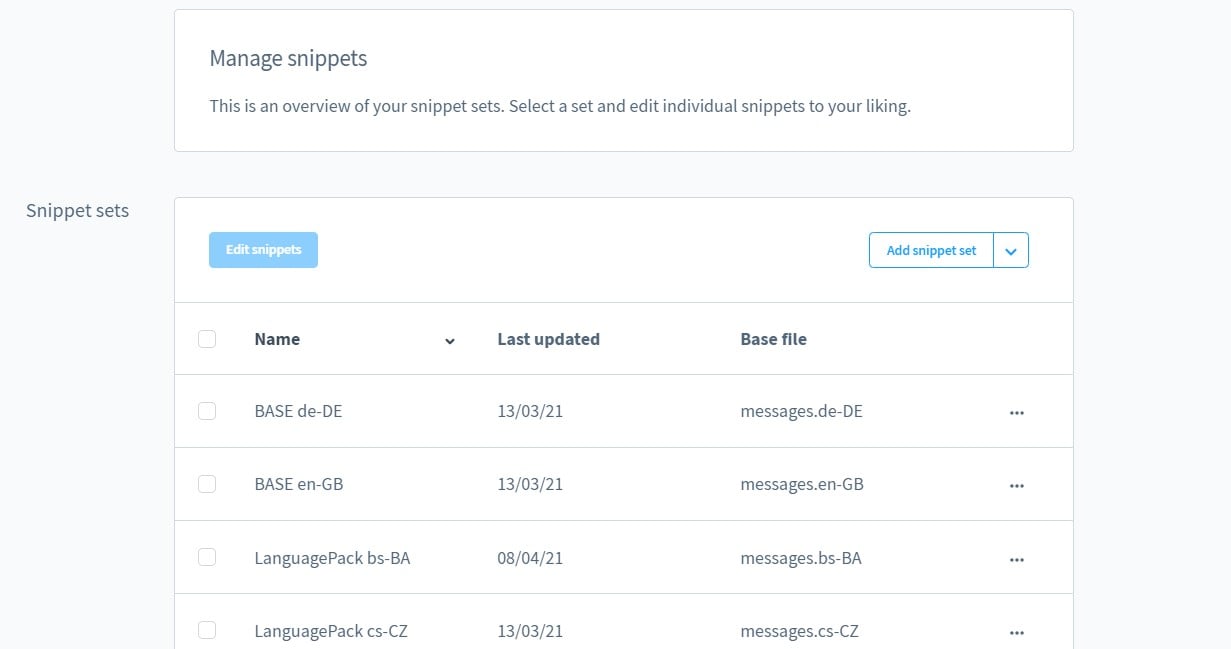
Let’s assume that you need to provide your storefront in another language. Duplicate an existing set and create its translation.
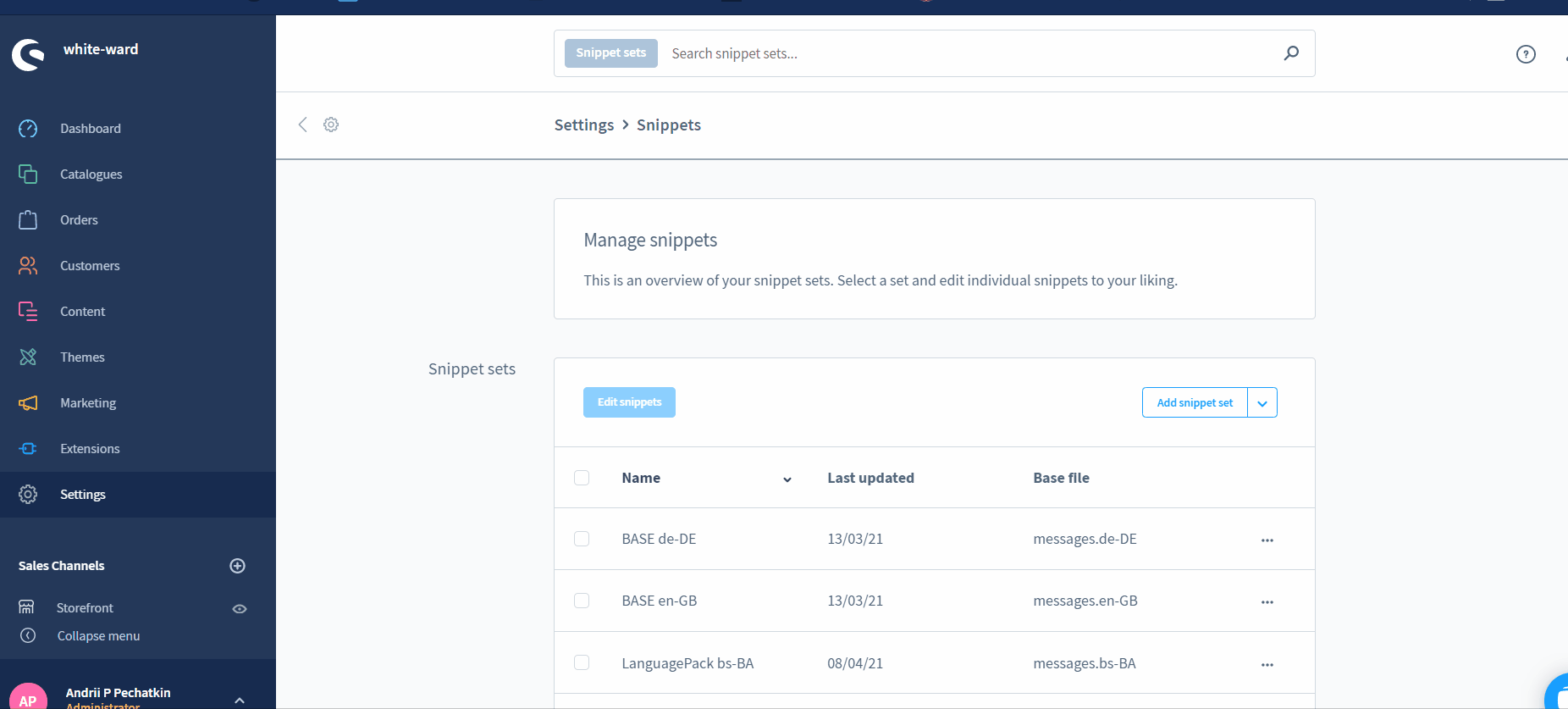
Note that all system texts that you do not translate immediately inherit from the duplicated set.
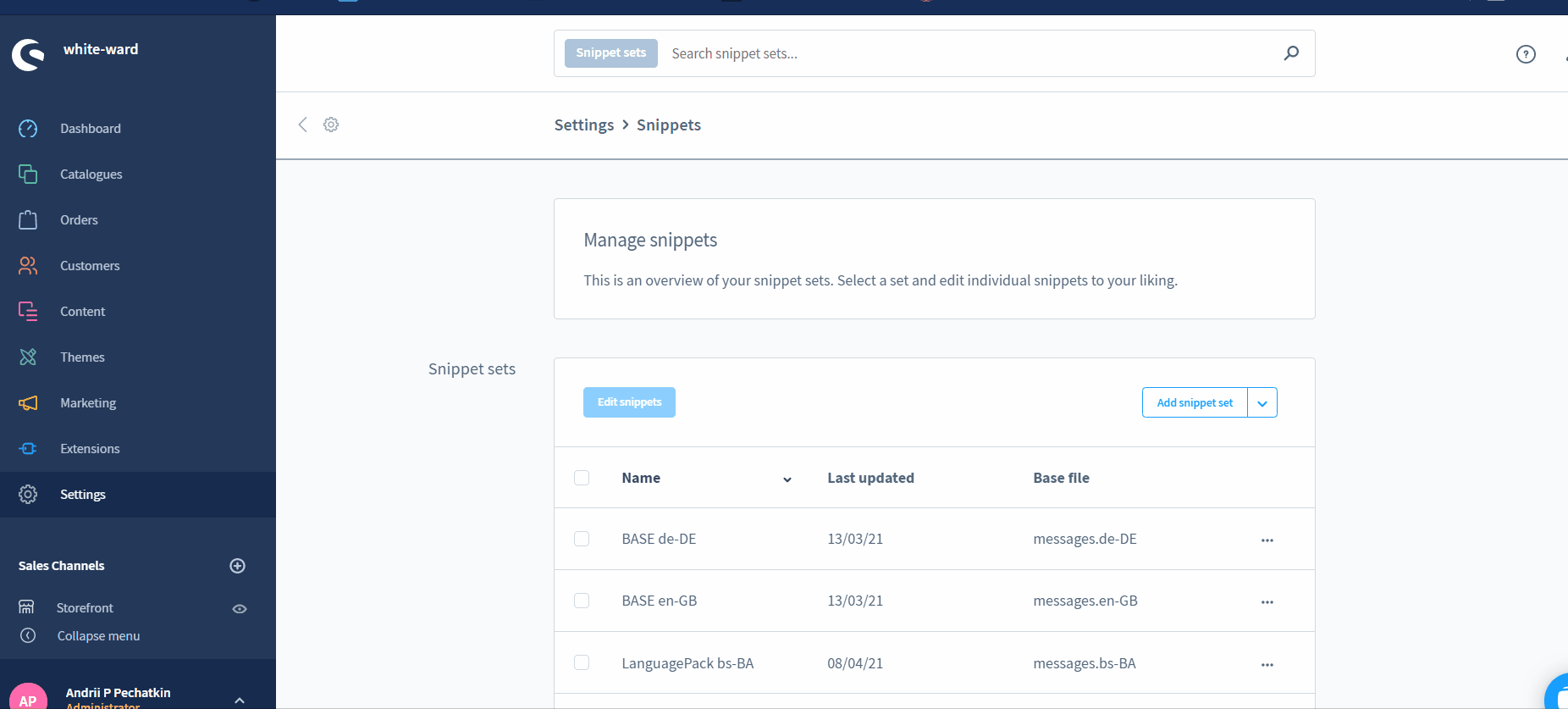
It is also recommended to look for a language pack in the
Individual texts
In addition to snippets that are fixed, Shopware 6 also uses lots of dynamic texts that have to be translated. They include product names, descriptions, shipping method names, payment method names, etc.
Languages
Shopware uses the configured languages for the individual texts. You can find the corresponding section in your administration under Settings -> Shop -> Languages.
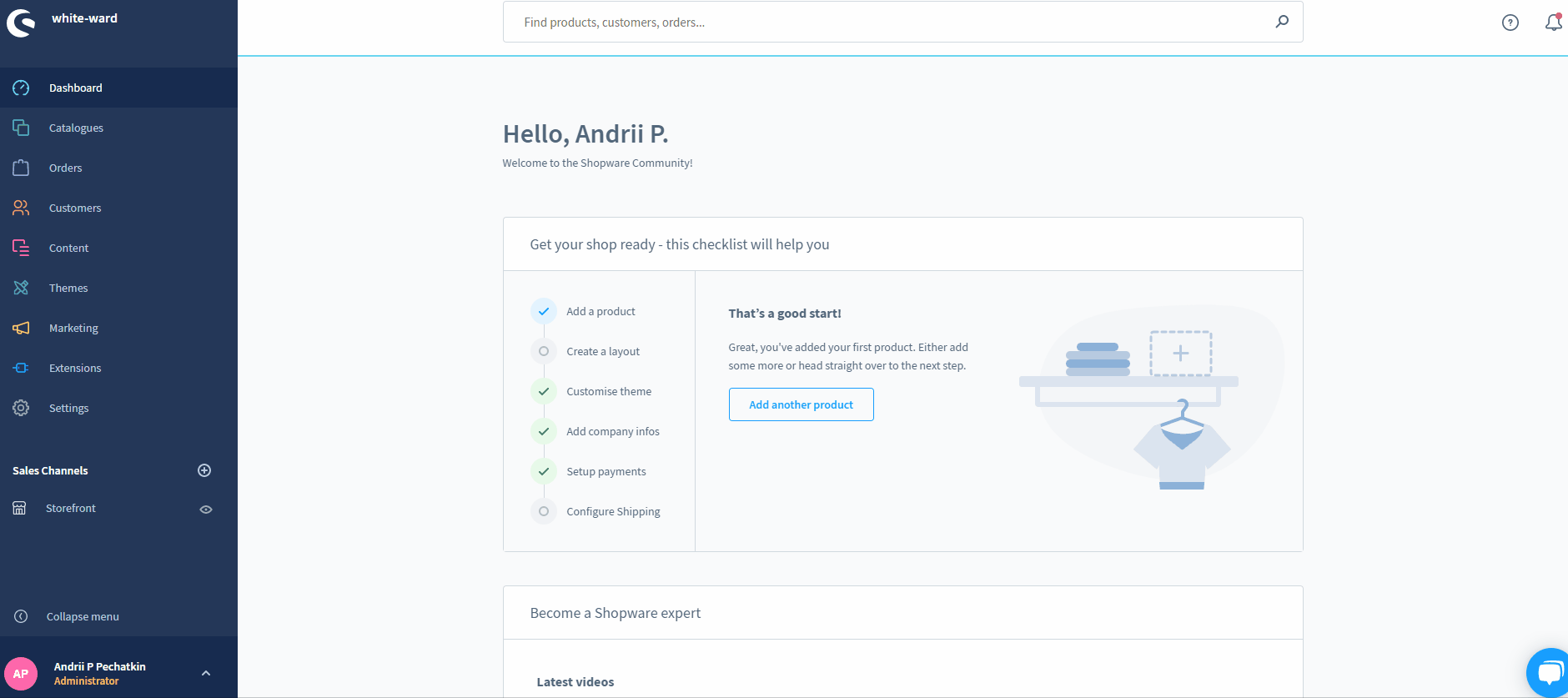
By default, Shopware 6 offers two languages – English and German. Click the Add language button to manage more translations on your website.

The system transfers you to the following screen:

How to create translations for Shopware 6
Let’s look at how to create product translations for Shopware 6:
- Open the product overview;
- Choose the language in which the product was created;
- Open product details that you want to edit;
- Switch to the desired language in the language selection at the top of the product overview;
- Translate all product overview fields into the target language.
Note that inheritance has been specified earlier when creating the language. All the fields that have not been translated yet are displayed in a grayed-out font in a parent language.
How to import translations to Shopware 6
Use the
Shopware 6 Essentials FAQ
How to create a Shopware account?
You need to create a Shopware account before translating a Shopware 6 website to different languages. Visit the registration page, hit the Register Now link, and fill in the form to create a new account. After receiving a confirmation email, follow the instructions provided in it.
What about a Shopware ID?
You will get your Shopware ID upon registration automatically. No additional steps should be taken.
What is Shopware master data?
All the information about your company and business is stored within the system as Shopware master data. It includes physical addresses, phone numbers, emails, etc.
How to add a new Shopware shop?
You need to create a new Shopware shop to translate the original storefront. Visit your merchant area, click the corresponding link, choose the type of your new shop (a cloud storefront or an on-premise installation), and provide all the information the system requires.
How to add a payment method to your Shopware account?
You can add a payment method to your Shopware account to use it for internal purposes under Basic Information -> Accounting. Select PayPal, credit card, or direct debit as a way to transfer funds to your account.
How to create a deposit in Shopware?
You can create a deposit for purchasing extensions and themes with a working payment method. Go to your Merchant Area -> Shops, choose a shop to provide funds to, click Open Account Details, and transfer a deposit that covers the amount of your purchase.
How to purchase Shopware extensions?
Use the Plugin Manager to purchase Shopware 6 extensions and themes. Alternatively, it is possible to do that on the Shopware Marketplace. In both cases, you need to create a deposit in advance that equals the amount of your future purchase. Next, select a tool you want to buy and complete the checkout.
How to get support in Shopware?
Send license inquiries to info@shopware.com or call +49 2555 9288 50. You can get help with accounting and financial issues here: financial.services@shopware.com and +49 2555 9288 510.
How to automate import and export processes in Shopware 6?
Use the Improved Import, Export & Mass Actions extension to automate data transfers since the module supports scheduled import and export tasks. Automate recurring data transfers due to update schedules.
How to migrate to Shopware 6?
Also, you can use the Improved Import, Export & Mass Actions module to migrate to Shopware 6. It can help you transfer data from your existing website to the new platform. Furthermore, you can move products along with the corresponding translations. The tool lets you migrate from other e-commerce systems or Shopware’s previous versions. Note that we also offer export solutions for systems like Magento and Shopify so that you can simplify your data transfers between them and Shopware.
How to integrate Shopware 6 with external systems?
You can use the Improved Import, Export & Mass Actions plugin to maintain the Shopware 6 integration with ERPs, CRMs, accounting tools, and other similar platforms using scheduled data transfers. The module can help you automate repetitive import and export processes due to schedules and mapping presets. The presets help you modify data according to the requirements of your Shopware store during import as well as follow the rules of the connected platform during export.


